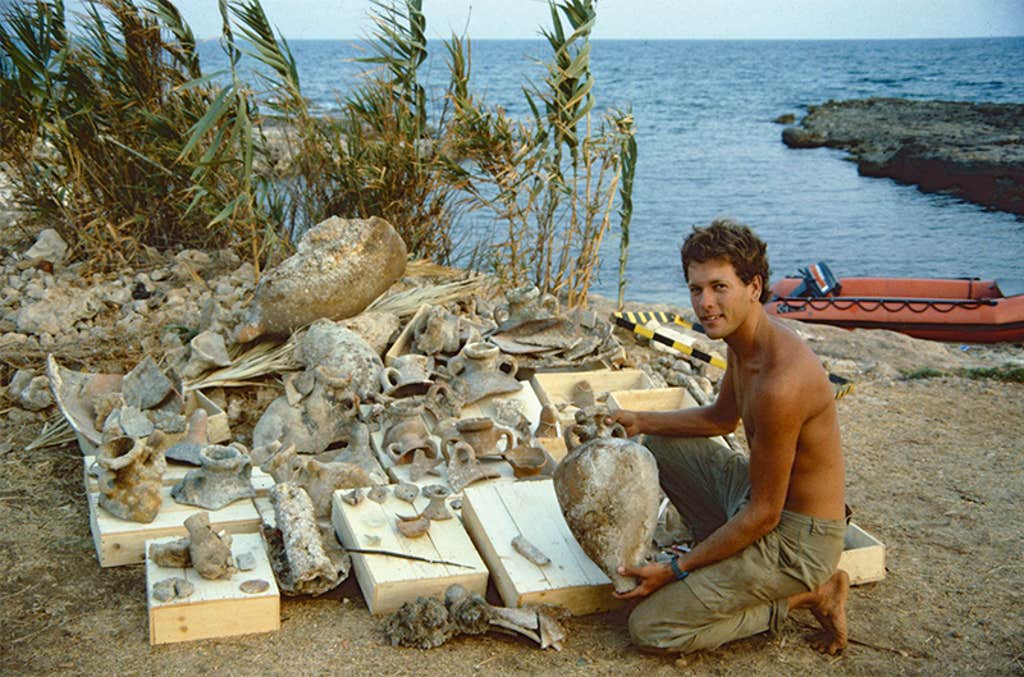1 Archaeology has more application to recent history than I thought
In the preface of my book, A History of the World in Twelve Shipwrecks, I emphasize that it is a history of the world, not the history; the choice of sites for each chapter reflects my own career and interests as an archaeologist. This may seem a well-worn point about the nature of written history, but being conscious of it while writing the book was a revelatory experience for me.
Early on in my career, I had a traditional view of archaeology—excavation was about uncovering artifacts that gave insights into periods for which other types of evidence were limited, generally meaning the older the site the more worthwhile it was to investigate. For two decades that guided my research into trade in the ancient Mediterranean and my excavations of shipwrecks containing pottery amphoras, important registers of economic activity in the Greek and Roman periods. But since then, I have focussed on sites of more recent historic date—from 16th-century wrecks off England to ships of the 19th century in the Great Lakes—and have found my perspective changing.

I realized that documentary evidence for ships even of the 19th century is often minimal, and that wrecks of any date can produce unique finds. Who would have thought, for example, that a World War II wreck nearly 4,700 meters deep in the Atlantic would contain a cache of letters so well-preserved that they could still be read, opening up a whole new vista on people’s lives and aspirations at a time when the future of the world hung in the balance. I realized that there is no cutoff point after which archaeology ceases to be meaningful, even for sites that are only just out of living memory.
2 Archaeological projects are open-ended
In researching my book, I was struck by how many excavations remain active projects years later as a result of advances in archaeological science. Blocks of metal called ingots from the Uluburun Bronze Age wreck off Turkey, which was excavated between 1984 and 1994, were subject to trace element analysis decades later, which has led to a fresh view of trade networks in early prehistory. For the Roman Plemmirio wreck off Sicily, also excavated in the 1980s, neutron activation analysis of shards of amphora pottery has allowed the source of the cargo to be pinpointed to one port on the coast of present-day Tunisia.
I found myself writing about the philosophy of Plato, the medieval libraries of Baghdad …
Analysis of human remains from King Henry VIII’s flagship the Mary Rose, raised from the sea in 1982, has given an unparalleled view of people in the Tudor period, even suggesting that the crew included men of Iberian and possibly North African origin. In another example of a discipline now known as osteoarchaeology, the scientific study of human skeletons excavated from archaeological sites, analysis of bones from King William Island in the Canadian Arctic has provided compelling evidence that the men of Sir John Franklin’s lost expedition resorted to cannibalism.
All of these breakthroughs were possible due to techniques and refinements of analysis that were not available—and might not necessarily have been anticipated—when the initial excavations were completed. It’s a great argument in favor of retaining artifacts and other materials from excavations for future scientific investigation.
3 Archaeology is not a hard science
Archaeologists have developed a systematic approach to the study of shipwrecks, because of close similarities in the nature of the “events” that led to the creation of these sites, which are reflected in the archaeological evidence. Broadly speaking, they tell us about specific sets of human activity: maritime trade, transport, exploration, and war. One thing that makes wrecks so worthy of study is the extremely high “resolution” of the data: Each shipwreck reflects a single event of loss in which the artifacts were not deliberately discarded, but were in use at the time. Most of these wrecks contain highly datable artifacts, such as coins or pottery, that can be used to closely date other objects in the assemblage, which may offer clues to their significance in society of the time. This characteristic is precisely what makes them useful for exploring research areas that are far removed from the “maritime.”
In my book, I found myself writing about the philosophy of Plato, the medieval libraries of Baghdad, Norse walrus hunters in the Arctic, King Henry VIII’s music, Charles Darwin’s fixation on barnacles, and the aspirations of a radio student in India in World War II. I allowed myself to be led by what I happened to find fascinating rather than by a formulaic approach to each site. Thus unshackled, the narrative becomes a reflection of my life-experience as much as anything else, with shipwrecks offering rich pickings and a clarity of vision into the past afforded by few other types of archaeological site. ![]()
Lead image: Richard Whitcombe / Shutterstock




























